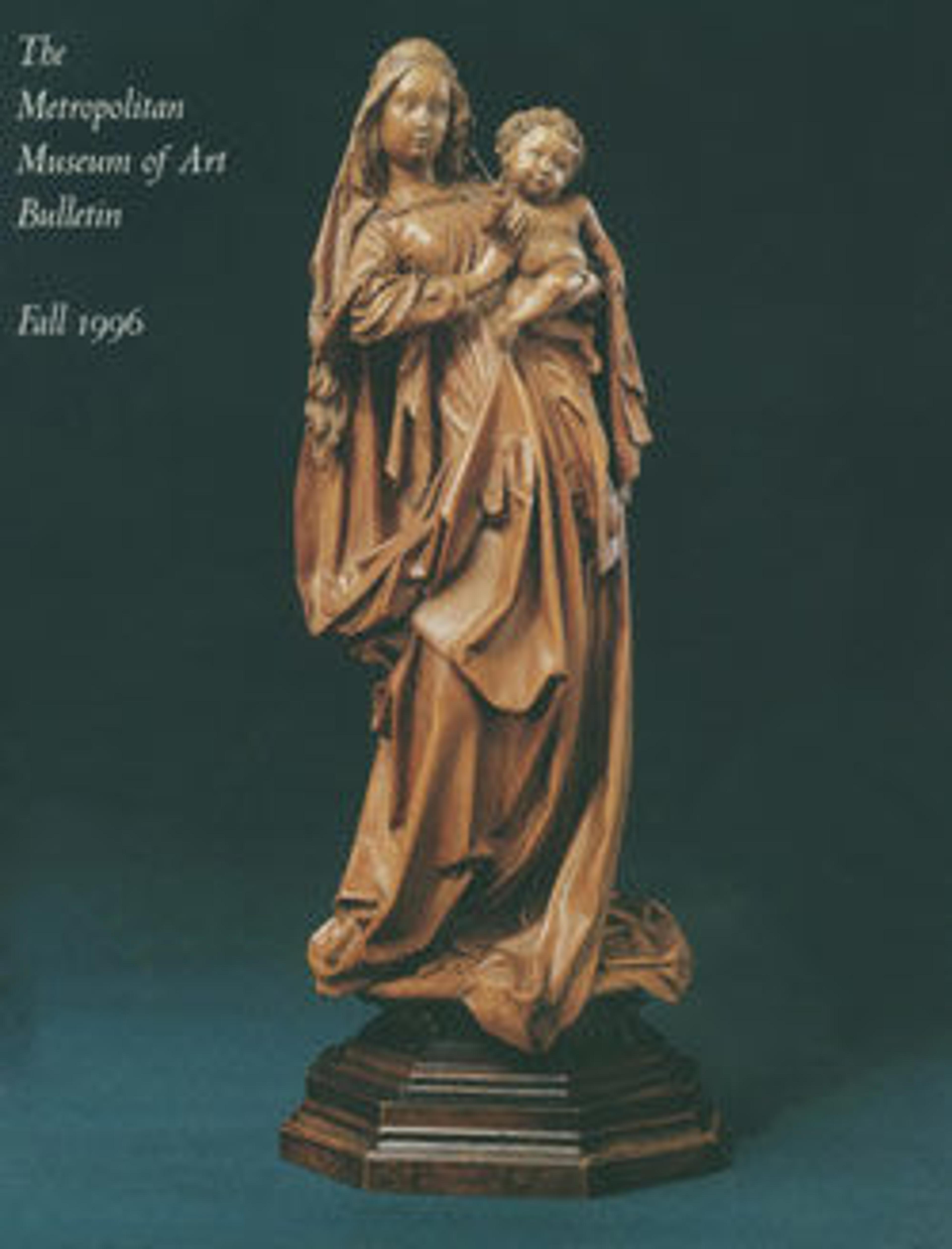Apple Blossoms
While living in Italy, expatriate Coleman devised a type of large-scale still-life painting that is synonymous with his name. Of the six known examples, "Apple Blossoms" is the most subtle and demonstrates the spirit of the international Aesthetic Movement, in which Coleman participated. Artists involved in the Aesthetic Movement aimed to create harmonious ensembles based on inventive borrowing and recombination of elements from many traditions. Thus in "Apple Blossoms" Coleman arranged a Near Eastern-style textile and Renaissance-inspired ceramic and glass vases in very shallow relief against a damask background in a composition that suggests his appreciation of Japanese paintings. The flowers, the tactile petals of which recall Coleman's study under Thomas Couture, engage in a delightful visual dialogue with their stylized counterparts ornamenting the man-made forms. The objects and textiles portrayed were probably part of Coleman's large collection (some of which he sold to Henry G. Marquand, who purchased them on behalf of the Metropolitan in the early 1890s). Thus both "Apple Blossoms" and its creator reflect the keen enthusiasm for collecting that was at the heart of the founding and early history of the Museum.
Artwork Details
- Title:Apple Blossoms
- Artist:Charles Caryl Coleman (American, Buffalo, New York 1840–1928 Capri, Italy)
- Date:1889
- Culture:American
- Medium:Oil on canvas
- Dimensions:62 3/8 x 35 in. (158.4 x 88.9 cm)
- Credit Line:Barbara and John Robinson Fund and Marguerite and Frank A. Cosgrove Jr. Fund, 1996
- Object Number:1996.102
- Curatorial Department: The American Wing
More Artwork
Research Resources
The Met provides unparalleled resources for research and welcomes an international community of students and scholars. The Met's Open Access API is where creators and researchers can connect to the The Met collection. Open Access data and public domain images are available for unrestricted commercial and noncommercial use without permission or fee.
To request images under copyright and other restrictions, please use this Image Request form.
Feedback
We continue to research and examine historical and cultural context for objects in The Met collection. If you have comments or questions about this object record, please contact us using the form below. The Museum looks forward to receiving your comments.
